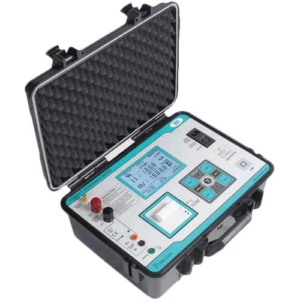Circuit Breaker is a critical component in the electric power system. Incorrect operation of circuit breakers can have disastrous consequences on the equipment connected downstream and the safety of substation personnel. Because of their key role, circuit breakers are to be periodically tested and diagnosed. Timely intervention can not only extend the life of the contact but also avoid unscheduled breakdown of the circuit breaker.
Tests to be performed
- Test for Timing of circuit breakers
- Static & Dynamic contract resistance measurements are carried out.
- Test on auxiliaries equipment
- Operating coils and recharging mechanisms.

Visual Observation
Visual observation shall include the following:
- Air Pressure in case of ABCB / Gas pressure in case of SF6 breakers
- Check for contamination near operating releases
- Check for abnormal sound/vibration during operation,
- Corrosion on parts of operating mechanisms, structures & supports
Timing Test of CB
- Closing Time
- Opening Time
- Close Open Time ( O-0.3sec-CO if applicable)
- Time spread between poles
- Recharging time of the operating device like
- motor charging, air releases, etc
- Consumption & recording of currents of the shunt closing releases and shunt opening releases.
- Mechanical travel characteristics (if feasible)
Opening Time
- The time between the instant of energizing the opening release of a circuit breaker which is in the closed position to the instant when arcing contact of all the poles has separated.
- The opening time shall include all such auxiliary equipment necessary to open the circuit breaker and form an integral part of the circuit breaker.
- Applicable to all CB which are tripped & operated by any form of auxiliary power.
Breaking Time
- The interval of time between the beginning of the opening time of the mechanical switching device and the end of the arcing time.
Closing Time -C
- The interval of time between energizing the closing circuit of the circuit breaker which is in open position to the instant when the contacts touch in all poles.
- The closing time shall include all such auxiliary equipment necessary to close the circuit breaker and form an integral part of the circuit breaker.
Close- Open Time- CO
- The interval of time between the instant when the contacts touch in the first pole during a closing operation and the instant when the arcing contacts have separated in all poles during the subsequent opening operation.
- It is assumed that the opening releases incorporated in the circuit breaker are energized at the instants when the contacts touch the first pole during closing. This represents the minimum close-open time.
Time spread between poles
- Time discrepancy between the contacts which is the interval time characterizing the divergence from the coincidence of connection or disconnection of the breaker contacts between the poles (non-simultaneous switching).
- This shall be as low as possible probably less than one peak of a half cycle.
Static Contact Resistance-CRM
- The measurement shall be carried out with the breaker in a closed position individually across each breaking contact.
- The current during the measurement shall have any convenient value, from 50 Adc to the rated current.
- It shall be ensured that there is no loose connection during measurements which will lead to higher contact resistance.
- The measured values shall be compared with the type test results giving consideration.
- Any increase in contact resistance indicates the unhealthiness of the contacts.
Dynamic contact resistance measurement-DCRM
- Dynamic contact resistance is an effective technique for assessing the condition of circuit breaker main contacts and arcing contacts.
- Static contact resistance can be measured with the breaker in the closed position, but it does not give any indication of the conditions of the arcing contacts.
- Excessive wear & tear of the arcing contacts may lead to rupturing of the main contacts which decreases the Circuit Breaker’s Breaking capacity.
- To assess this only an internal inspection was done in earlier days. However, DCRM up to rated speed were developed to assess the condition of the arcing contacts.
- A current of 100A or above is applied across each of the separating contacts in a breaker pole undergoing Open or Close operation. A resistance plot is obtained with the contacts in motion. By assessing these plots the healthiness of the contacts can be established.
Motor Charging time
- Motors that are employed to charge springs shall operate satisfactorily between 85 to 110 % of rated voltage & rated frequency.
- The consumption and time of recharging shall be measured.
- For condition assessment of the circuit breaker, multiple tests are to be carried out.
SUMMARY
- The results of all the tests have to be analyzed for arriving at conclusions.
- Periodic condition assessment reduces the risk of unscheduled breakdown and shall be part of any regular maintenance program.


